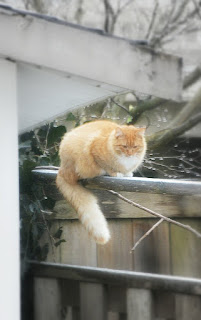Today is the day I planted Centaurea. I have been waiting through snow, sleet, icy winds, snow....didn't I say that already? Anyways. It sort of looks like spring.It's muddy and wet and the rain forest is dripping, and the dirt is....well....its nice and wormy. It's the middle of March, it is okay to sow now. Though I think some people might sow cornflowers in April. CORNFLOWERS like a bit of frost to help them to germinate. Kind of like sweet peas. But sweet peas I will do in a few weeks. Today it was cornflowers.


Centaurea has many names: Cornflower, Bachelor's Button, Blubottle, Hurtsicle, Hardheads, Knapweek, and a few more.
They are a very old wildflower, from the UK, originally.
It used to be that farmers would curse the Cornflower cause it would be quite invasive. I noticed them growing here in my garden, off and on, over the past few years. Never knew where they came from, since I didn't plant any seeds. The seeds must have come in on the soil I had trucked in .
Centaurea loves poor soil. Doesn't care if you've mulched it, spread it with fertilizer or talked to the dirt to make things grow better.
Make a shallow line and sprinkle in the seeds...doesn't have to be fussy. Don't use the entire packet. Save about half. You can continue sowing through August to Sept. A little at a time. And remember to save the seeds from the spent flowers. Cut them for bouquets. You'll get more than you know what to do with!


The wildflower will grow and bloom, at least it should, most of the months you have other things growing.
Likes full sun. so don't plant in shade.
I dug up my compost. Full of squiggly worms these days. Then dumped the contents onto the garden bed. The worms know what to do from that point.
Once you have the seeds sown, cover lightly with dirt. Doesn't have to packed down or the seeds planted deep. Shallow is best.


The seeds first look a lot like maggots. I know. Gross. But they're just seeds and they don't move around like maggots. So, you're safe. I put them into a plastic cup, like a freezer jam container, for safe keeping.Wrap the seed packet wrapper on the outside and use an elastic and to hold it in place. That way, you'll know for future use.
It is now considered rare to find Centaurea. It is now considered endangered. In Britain it could be found in almost 250 sites, but now has been wittled down to around 50 or less, I believe. In Germany, the cornflower is one of the national symbols. When the Queen of Prussia was escaping from Napoleon, she hid her children ( so the story goes) in a field of cornflowers and weaved wreaths for them of the wild flowers.


Luckily, in North America, and Australia, seeds are readily available and the move is on to keep it naturalized. Yay. So excited I could find these seeds. There is much folklore associated with the blue Cornflower. It is said that in ancient days, young men would wear a blue cornflower to prove their love was true. If the flower faded, their love was not true. Lucky for so many of those young men, I am sure, because the cornflower DRIES WELL and is a true blue, so I would think they definitely would be lucky in love.


"The hedge with roses was covered, and wondrous rare thru all the air, the scent of the vineyards hovered. The cornflowers blue, the poppies too...."
-Hermann Ferdinand Freiligrath (1810-1876) ( German Poet, translator)
Photographs: 2017 M. McConachie Woods












No comments:
Post a Comment